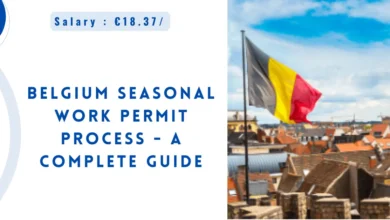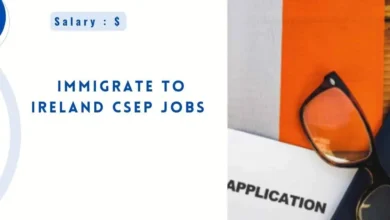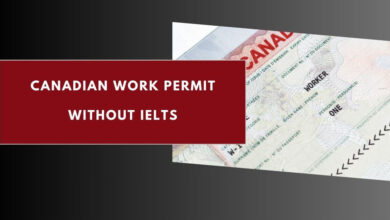Poland Work Permit Rules 2026 – Eligibility Criteria
Thinking about working in Poland? The country has updated its work permit system to meet growing labor demands, especially in key sectors like IT, healthcare, agriculture, and construction.
This guide breaks down each type of Polish work permit (A to S), eligibility criteria, and how to apply.
Why Poland is in Demand?
Poland has become a prime destination for foreign professionals due to:
- A growing economy
- Skill shortages in many sectors
- Simplified visa and permit options
These updates make Poland more accessible but also more regulated. Choosing the correct work permit type is essential for a smooth entry.
Read Also: Poland Study Visa – Quick Apply
Details of Work Permit Types:
| Type | Best For | Salary Requirement | Max Validity | Key Requirements |
|---|---|---|---|---|
| A | Regular jobs with Polish companies | Minimum wage or higher | 3 years | Job offer + valid employment or civil law contract |
| B | Board members, top execs | Not specified | 5 years | Management role + company size/revenue criteria |
| C | Intra-company transfers | ≥ 70% of regional average | 3 years | Employed abroad by same company, 30+ days/year |
| D | Foreign service providers | ≥ 70% of regional average | 3 years | No Polish branch; temporary service contracts |
| E | Special cases or niche experts | Minimum wage | Case-by-case | Contract-based; not fitting A–D types |
| S | Seasonal work | Stable income | 9 months/year | Agriculture, fishing, tourism sectors |
Permit Details:
Type A: Standard Employment Permit
- For full-time roles in Polish companies
- Requires a valid job offer
- Salary must meet Polish minimum wage and be comparable to local standards
- May require a labor market test unless on the shortage list
- Application by employer via www.praca.gov.pl
Type B: Executive/Management Permit
- For board members or managing directors
- Must work at least 6 months per year in Poland
- Company must employ 25+ people or generate 12x average wage annually
- No job offer required, but leadership role must be proven
Type C: Intra-Company Transfer
- For employees transferred from a foreign branch to a Polish branch
- Salary must be at least 70% of regional average
- Needs delegation letter, proof of employment, passport, and insurance
Type D: Service-Based Permit
- For workers offering temporary services from companies abroad (no Polish branch)
- Same 70% wage rule applies
- Requires a Polish contact representative
- Assessed for temporary/occasional nature
- Fee: PLN 200
Type E: Exceptional Cases
- For roles not fitting under A-D (e.g., niche consultants)
- Requires job or service contract
- Salary must meet minimum wage
- Subject to labor market test unless exempt
Type S: Seasonal Work Permit
- For sectors like agriculture, fishing, hospitality, tourism
- No long-term contract needed
- Max duration: 9 months/year
- Must show proof of income, insurance, and housing
- Nationals of Armenia, Belarus, Georgia, Moldova, or Ukraine may qualify under a simplified declaration process
Benefits:
- Increases Approval Chances
Knowing the correct eligibility criteria helps applicants avoid common errors and submit complete, compliant applications. - Matches You to the Right Permit Type
Understanding the differences between permit types (A to S) ensures you’re applying under the right category for your job or role. - Saves Time and Processing Delays
Meeting all eligibility requirements upfront reduces the risk of rejection or requests for additional documents. - Helps Employers File Correctly
Employers can better navigate application requirements, such as salary thresholds, labor market tests, or contract types. - Ensures Legal Compliance
Following the correct rules helps foreign workers stay in Poland legally and avoid immigration issues or penalties. - Builds Long-Term Career Pathways
Properly issued work permits can be stepping stones toward EU Blue Cards, long-term residency, or family reunification. - Facilitates Mobility Within the EU
For some skilled permit holders, knowing eligibility early helps them plan for future work opportunities across the Schengen Area. - Simplifies Employer-Employee Agreements
Clear permit requirements help both parties—employers and workers—set proper contract terms from the start. - Supports Transparent Communication with Authorities
Understanding criteria means better-prepared interviews, fewer misunderstandings, and smoother interactions with Polish immigration offices. - Access to Simplified Routes for Some Nationals
Citizens of countries like Ukraine, Georgia, and Moldova may benefit from simplified seasonal or short-term work routes—knowing this can unlock faster entry options.
How to Apply for Poland Work Permit Rules 2026?
- Most applications are submitted by the employer via www.praca.gov.pl
- Required documents may include: job contract, salary proof, housing proof, valid passport, insurance, and more
- Some permits (e.g., Type S) require fewer documents if using a simplified route
Tips for Applicants:
- Confirm if your job is on Poland’s shortage occupation list
- Ensure your salary meets the regional or national minimums
- Don’t submit fake or incomplete documents
- Keep copies of all submitted materials for your records
Useful Resources:
- Polish Ministry of Foreign Affairs – Visa Info
- Voivodeship Office – Work Permit Type A
- UK Government – Travel to Poland for Work
Frequently Asked Questions:
Do citizens from countries like Ukraine or Georgia need a work permit?
Some nationals (e.g., from Ukraine, Georgia, Moldova, Armenia, Belarus) may qualify for simplified access under the “employer declaration” system for short-term or seasonal work. However, longer-term employment still requires a work permit.
Can I change employers after getting a Polish work permit?
Generally, no—Polish work permits are employer-specific. A new employer must apply for a new permit. There are exceptions in certain permit categories or long-term residence statuses.
Who needs a work permit to work in Poland?
Most non-EU/EEA foreign nationals need a work permit to legally work in Poland, unless they qualify for exemptions (e.g., EU Blue Card holders, students with work rights, or citizens of specific partner countries).




